Scaling Amigurumi to Any Size
I’m often asked how to scale one of my amigurumi patterns up or down by a specific amount, so I’ve put together this guide to help you resize any amigurumi to the size you want.
I’ve split the various sizes of amigurumi into eight scales, and named them all: from smallest to largest, Micro, Mini, Small, Standard, Large, Double, Giant, Extreme. (If you’d like to read more about how I came up with these scales, read about my experiment and methods in my Scaling Amigurumi: a crochet investigation article.)
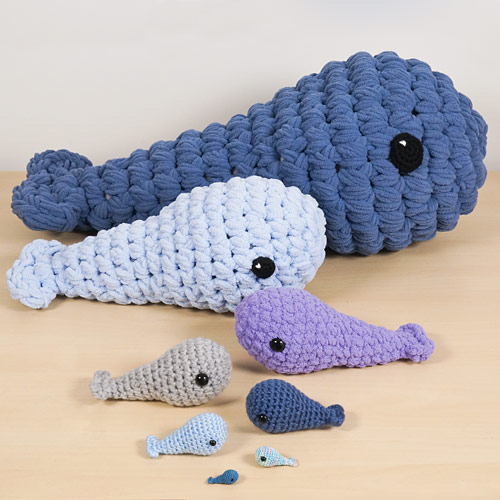
To illustrate the size differences, the photos on this page show my Tiny Whale pattern worked in each of the scales. The three dark blue whales mark the limits: smallest (Micro), largest (Extreme), and the Standard size, made with worsted weight yarn and a US E/3.5mm hook.
The conversion table below will help you choose the right yarn and hook size to scale any amigurumi pattern up or down by any amount, from extremely small to extremely large.
Amigurumi Size Conversion Table
For each amigurumi size I’ve given the yarn weight and hook you’ll need to make that size, and its approximate scale factor compared with standard amigurumi (the row marked in bold in the table below).
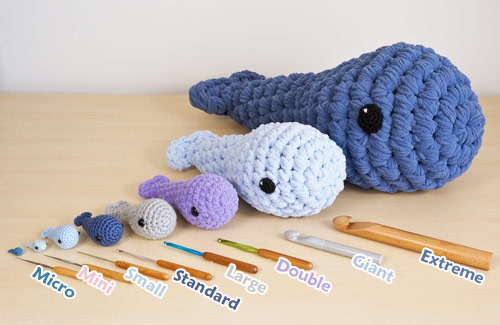
Pictured above are the main amigurumi sizes with the hooks used to crochet them (L-R): Micro, Mini, Small, Standard, Large, Double, Giant, Extreme
| Amigurumi Size | Yarn | Hook1 | Scale Factor |
| Micro2 | crochet thread #30; pearl cotton #12 |
0.9mm (14) | 0.3 |
| Mini | crochet thread #20; pearl cotton #8 |
1.4mm (8) | 0.4 |
| Small | sport (#2) – DK (#3) | 2.25-2.75mm (B-C) |
0.8 |
| Standard | worsted (#4) | 3.5mm (E) | 1 |
| Large | 2 strands worsted (#4); 1 strand bulky (#5) |
5mm (H) | 1.5 |
| Double | 2 strands bulky (#5); 1 strand super bulky (#6) |
6.5mm (K) | 2 |
| Giant | 2 strands super bulky (#6); 1 strand jumbo (#7)4 |
15mm (P/Q-19) | 3.6 |
| Extreme3 | 6 strands super bulky #6; 1 strand jumbo (#7)4 |
25mm | 6.5 |
Notes:
- As hook size names can vary between brands, I’ve given the mm size first, followed by the common (US) size name. The best hook size for you will vary depending on the exact yarn you choose and how tightly you crochet – the hook sizes given here are good starting points, but you should choose an appropriate hook for your project, no matter the scale of the amigurumi:
- If your stitches stretch open too much and the stuffing is clearly visible, reduce the hook size.
- If you cannot insert the hook into your previous stitches, increase the hook size.
- Micro Amigurumi refers to any extremely small amigurumi, so you may also find ‘micro amigurumi’ made with sewing thread and a 0.4-0.6mm hook – those could be much smaller than the sample I measured, so the scale factor would also be smaller.
- Extreme Amigurumi refers to any extremely large amigurumi, so you may also find ‘extreme amigurumi’ made with unplied roving and a 40mm hook (or hand-crocheted with no hook) – those could be much larger than the sample I measured, so the scale factor would also be larger.
- Jumbo #7 weight is a catch-all term for any yarn thicker than super bulky, so these yarns can range widely in weight, with recommended hook sizes of between 15mm and 40mm! For Giant Amigurumi, you’ll need a jumbo yarn that recommends using a 15-19mm hook; for Extreme Amigurumi you’ll need a jumbo yarn that recommends using at least a 25mm hook.
How to Use the Size Conversion Table
As you can see from my worsted weight yarn comparison, even using the same hook and pattern with different worsted weight yarns can result in a remarkable range in size. (And that doesn’t account for other factors: the differences between our hook styles; how tall we each draw up our loops; our tension…)
So please be aware that the scale factor in my table is only a rough estimate. This isn’t an exact science; crochet is handmade, after all!
Reading the Scale Factor
I’ve given the scale factor as the difference from standard size (1), so, for example, 6.5 (for Extreme Amigurumi) means the amigurumi will be 6.5 times larger than standard.
How Large will my Amigurumi Be?
To find out roughly how large your amigurumi will be at a different scale, look at the standard size in the pattern, and find the scale factor that corresponds to the hook and yarn you want to use.
So, for a 4″ long standard amigurumi, converting it to Extreme Amigurumi scale (6.5) means:
final size = 4 x 6.5 = 26″
Resizing To a Specific Size
To find your scale factor, look at the standard size in the pattern, and the size you want your amigurumi to be.
So, for a 6″ tall amigurumi that you’d like to reduce to 3″ tall:
scale factor = 3 / 6 = 0.5
Then find the closest scale factor from my table to find the hook and yarn you should use.
Resizing in Between the Options
If you’d like to go for a scale in between two of my options, look at the closest size option on either side and choose a yarn weight and hook size that lie in between the two.
Example: Half Size (0.5x)
From the table, you can see that Mini Amigurumi is 0.4 and Small Amigurumi is 0.8, so you’ll want to choose yarn and hook sizes between those listed for those two sizes, i.e. a yarn weight in between size 20 crochet thread and sport (#2) yarn, and a hook size between 1.4 and 2.25mm.
- As a starting point, I’d try a size 10 or 5 crochet thread, or a super fine (#1) or lace (#0) yarn, and a 1.6-1.8mm hook.

So there you have it – a way to make amigurumi in any size from extremely small to extremely large! You can use my table as:
- A starting point for figuring out how big your amigurumi will be when you use a different yarn and hook
- A reference for the yarn and hook sizes to choose to make an amigurumi of a specific size
I hope you’ll find this conversion table as helpful as I do!
How to Go Giant!
Learn all my upsizing tips and techniques (including patterns for the giant eyes!) in my ebook The Complete Guide to Giant Amigurumi:
This is the perfect guide for all your Double, Giant and Extreme Amigurumi – every stage of making a super-sized amigurumi is slightly different from what you might expect, and I’ve designed this book as a comprehensive reference guide that covers everything from the absolute basics to tips for fixing problems and making complex amigurumi.
Loved this tutorial? I have so many more amigurumi tips and tricks to share with you!
Boost your amigurumi skills with my latest book, The Essential Guide to Amigurumi, your comprehensive guide to amigurumi techniques and tips.
Do you find my tutorials helpful? If so, please consider making a contribution towards my time so I can continue to create clear and concise tutorials for you:
Thank you so much for your support! Now click below for loads more crochet video and photo tutorials (and do let me know what else you’d like me to cover in future tutorials…)

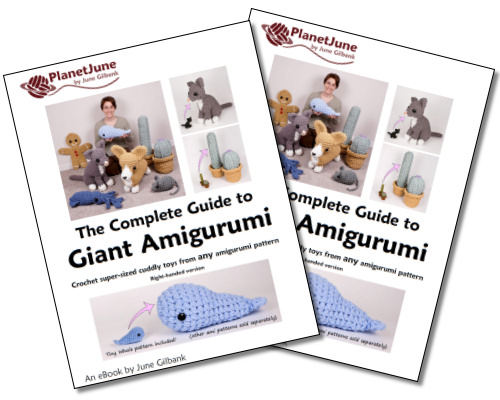
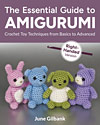
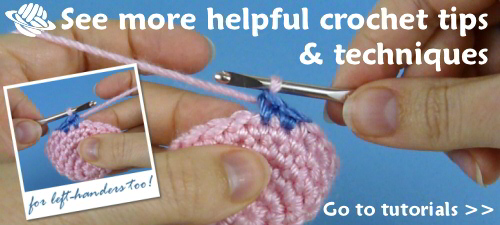














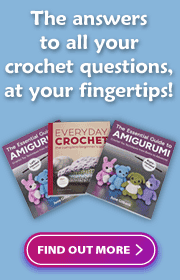
Leave a Reply